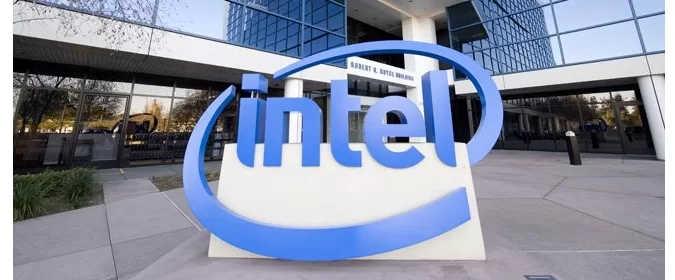Intel Building the Future of High Performance Computing

Customers Select Intel to Accelerate Research and Help Solve Scientific Challenges
Intel is the foundation of high performance computing (HPC) – from the workstation to the cloud to the backbone of the Top500. At SC20, Intel’s Trish Damkroger, vice president and general manager of HPC at Intel, shows how Intel and its partners are building the future of HPC today through hardware and software technologies that accelerate the broad deployment of advanced HPC systems. (Credit: Intel Corporation)
Intel’s SC20 Content: HPCwire website
Keynote Slides: “Building the Future Today with HPC”
At Supercomputing 2020 (SC20), Intel highlighted how the company’s hardware and software technologies are enabling the future of high performance computing (HPC). Companies around the world are selecting Intel® XPUs (CPUs, GPUs, FPGAs and accelerators) and oneAPI programming environment to accelerate the development and deployment of advanced computing systems.
3rd Gen Intel® Xeon® Scalable Processors (code-named “Ice Lake”)
In her keynote presentation to kickoff SC20, Trish Damkroger, vice president and general manager of High Performance Computing at Intel, highlighted Intel’s upcoming Ice Lake server processors that deliver performance-optimized features for a range of HPC workloads. Increased memory bandwidth, a new high-performance Sunny Cove core architecture, increased processor core count and support for PCIe Gen4 will help customers solve scientific challenges across different disciplines, including life sciences, material science and weather modeling.
Early testing demonstrates that two socket systems using 32-core Ice Lake processors can deliver higher performance on specified workloads at half the core count when compared to competitive x86 systems with 64-core processors. Customers running life sciences and financial services applications can expect to see higher performance on workloads such as NAMD molecular dynamics simulation (up to 1.2 times)1, Monte Carlo simulations (up to 1.3 times)2, and LAMMPS molecular modeling simulation (up to 1.2 times)3 compared to competitive x86 systems featuring twice as many cores as a 32-core Ice Lake processor-based system.
Several customers are adopting Ice Lake to address their next-generation HPC needs, including:
- Korea Meteorological Administration, which selected Ice Lake server processors to power its Supercomputer No. 5. The system will deliver 50 petaflops performance to help study weather and climate change and enable more reliable and actionable forecasting relative to its current system.
- The Max Planck Computing and Data Facility, which will adopt Ice Lake for use in its new Raven system. The Raven system will deliver 9 petaflops performance and enable groundbreaking research in physics, bioscience, theoretical chemistry and more.
- The National Institute of Advanced Industrial Science and Technology (AIST), which will use Ice Lake to power its AI Bridging Green Cloud Infrastructure system being added to its AI Data Center Building. The system is expected to deliver a theoretical peak performance of half-precision floating-point operations of 850 petaflops.
- The University of Tokyo and Osaka University, which are the first Japanese universities to leverage Ice Lake. The University of Tokyo’s 2.4 petaflops system and Osaka University’s greater than 8 petaflops system will be used for general research and data analytics.
- Oracle which will deploy Ice Lake within its Oracle Cloud Infrastructure to power its X9 Generation HPC cloud instance, targeted at computationally intensive workloads such as crash simulation, seismic analysis and electronic design automation.
Damkroger also highlighted some of the recent supercomputing projects that target Intel’s latest Xeon processors, future Xeon processors, memory and artificial intelligence (AI) technologies to advance science and research:
- Barcelona Supercomputing Center is leveraging Intel® Optane® persistent memory and Xeon Scalable processors to accelerate HPC applications using heterogeneous memory architectures. Its researchers found Optane persistent memory uses 10 times less power than DRAM and double-digit increases in performance for several applications.
- LIQID and Intel are collaborating to provide the world’s largest composable supercomputer for the U.S. Department of Defense. LIQID’s platform consists of Intel Xeon Platinum 9200 CPUs and is being used to create software-defined servers on demand for the DoD’s AI-infused workloads – driving up resource utilization and AI performance.
- Los Alamos National Laboratory’s Crossroads supercomputer will enable scientists at Lawrence Livermore, Los Alamos and Sandia National Laboratories to support the Stockpile Stewardship Program, current and planned weapons Life Extension Program activities, and future predictive weapons research and calculations. The system will feature Intel’s upcoming Sapphire Rapids processor and deliver four times greater system performance and enable easier code portability than its predecessor, the Trinity system.
- Lawrence Livermore National Laboratoryis leveraging the latest Intel Xeon Scalable processors in its Ruby supercomputer to perform functions for the National Nuclear Security Administration (NNSA) and support the Laboratory’s COVID-19 research.
Intel Xe-HP GPUs Provide Argonne a Path to Exascale
At SC20, Intel and Argonne National Laboratory also announced their collaboration on the co-design and validation of exascale-class applications using GPUs based on Intel’s Xe-HP microarchitecture and Intel oneAPI toolkits. Developers at Argonne are tapping into Intel’s latest programming environments for heterogeneous computing to ensure scientific applications are ready for the scale and architecture of the Aurora supercomputer at the time of deployment.
The Xe-HP GPUs offer Argonne a development vehicle for Intel Xe-HPC GPUs (“Ponte Vecchio”) that will be used in the Aurora system.
More information can be found at “Intel and Argonne Developers Carve Path Toward Exascale .”
Intel® Select Solutions for HPC
Intel recently announced several new partners have verified and are offering HPC-optimized solutions using Intel Select Solutions. These include:
- AWS, which announced incorporation of the Intel Select Solution for simulation and modeling into its ParallelCluster environment, making it easy for customers to create performant, on-demand and automatically scaling clusters on AWS using an Intel-optimized environment. The Intel Select Solution has been verified on AWS’ c5n.18xlarge, m5n.24xlarge and r5n.24xlarge instances.
- Penguin Computing, which is now deploying Intel Select Solutions for HPC & AI Converged Clusters, offering the ability for customers to meet the increasing need to run both AI and HPC workloads.
- Advantech, which has partnered with Intel and GARAOTUS to deliver the Advantech SKY-5240. The Advantech SKY-5240 addresses the high-performance computing demands of genomics applications and has been verified as an Intel Select Solution for genomics analytics.
For more information about Intel’s participation at SC20, visit Intel.com.
Performance varies by use, configuration and other factors. Learn more at www.intel.com/PerformanceIndex. Performance results are based on testing as of dates shown in configurations and may not reflect all publicly available updates. See backup for configuration details. No product or component can be absolutely secure. Your costs and results may vary. Intel technologies may require enabled hardware, software or service activation. Intel does not control or audit third-party data. You should consult other sources to evaluate accuracy.
1 NAMD STMV: 2S 3rd Gen Intel Xeon Scalable processor (Ice Lake): 1-node, 2x pre-production 3rd Gen Intel Xeon Scalable processor (Ice Lake – 2.2GHz, 32cores per socket), Intel reference platform, 256GB, 16x16GB 3200MHz DDR4, HT=on, TURBO=on, SNC=disabled, SSDSC2KG96 960GB, BIOS SE5C6200.86B.0017.D92.2007150417, microcode 0x8c000140, CentOS Linux 7.8, 3.10.0-1127.18.2.el7.crt1.x86_64, compiled with Intel C Compiler 2020u2, Intel MKL, NAMD: 2_15-Alpha1, tested by Intel on 9-17-2020. 2S AMD EPYC 7742: 1-node 2x AMD EPYC 7742 (2.25GHz, 64cores per socket), Supermicro platform, 16x16GB 3200MHz DDR4, SMT on, Boost on, NPS=4, SSDSC2KG96 960GB, BIOS2.0b dt 11/15/2019, microcode 0x8301025, CentOS Linux 7.7.1908, 3.10.0-1127.13.1.el7.crt1.x86_64, compiled with AOCC 2.2, Intel MKL, NAMD: 2_15-Alpha1, tested by Intel on 9-10-2020.
2 Monte Carlo: 2S 3rd Gen Intel Xeon Scalable processor (Ice Lake): 1-node, 2x pre-production 3rd Gen Intel Xeon Scalable processor (Ice Lake – 2.2GHz, 32cores per socket), Intel reference platform, 256GB, 16x16GB 3200MHz DDR4, HT=on, TURBO=on, SNC=disabled, SSDSC2KG96 960GB, BIOS SE5C6200.86B.0017.D92.2007150417, microcode 0x8c000140, CentOS Linux 7.8, 3.10.0-1127.18.2.el7.crt1.x86_64, compiled with Intel C Compiler 2020u2, Intel MKL 2020u2, Monte Carlo FSI Kernel workload developed by Intel, tested by Intel on 10-9-2020. 2S AMD EPYC 7742: 1-node 2x AMD EPYC 7742 (2.25GHz, 64cores per socket), Supermicro platform, 16x16GB 3200MHz DDR4, SMT on, Boost on, NPS=4, SSDSC2KG96 960GB, BIOS2.0b dt 11/15/2019, microcode 0x8301025, CentOS Linux 7.7.1908, 3.10.0-1127.13.1.el7.crt1.x86_64, compiled with Intel C Compiler 2020u2, Intel MKL 2020u2, Monte Carlo FSI Kernel workload developed by Intel, tested by Intel on 7-17-2020.
3 LAMMPS (Geomean of Atomic Fluid, Copper, Liquid Crystal, Polyethylene, Protein, Stillinger-Weber, Tersoff, and Water): 2S 3rd Gen Intel Xeon Scalable processor (Ice Lake): 1-node, 2x pre-production 3rd Gen Intel Xeon Scalable processor (Ice Lake – 2.2GHz, 32cores per socket), Intel reference platform, 256GB, 16x16GB 3200MHz DDR4, HT=on, TURBO=on, SNC=disabled, SSDSC2KG96 960GB, BIOS SE5C6200.86B.0017.D92.2007150417, microcode 0x8c000140, CentOS Linux 7.8, 3.10.0-1127.18.2.el7.crt1.x86_64, compiled with Intel C Compiler 2020u2, Intel MKL 2020u2, LAMMPS 03/03/2020, tested by Intel on 10-9-2020. 2S AMD EPYC 7742: 1-node 2x AMD EPYC 7742 (2.25GHz, 64cores per socket), Supermicro platform, 16x16GB 3200MHz DDR4, SMT on, Boost on, NPS=4, SSDSC2KG96 960GB, BIOS2.0b dt 11/15/2019, microcode 0x8301025, CentOS Linux 7.7.1908, 3.10.0-1127.13.1.el7.crt1.x86_64, compiled with AOCC 2.2, LAMMPS 07/21/2020, tested by Intel on 8-19-2020.
SOURCE: Intel













